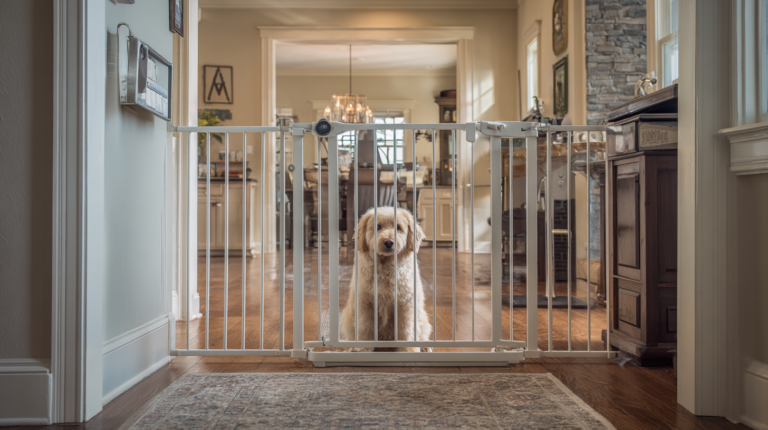Discover 7 proven, stress-free solutions for how to stop dog barking. Our expert guide helps you understand and address excessive barking using positive, humane methods.
Table of Contents
Introduction: Understanding Your Dog’s Vocal Communication

Every dog owner has experienced it—that moment when your furry friend just won’t stop barking. Whether it’s the doorbell, passing neighbors, or seemingly nothing at all, excessive barking can strain your patience, disturb your peace, and even cause tension with neighbors. If you’re wondering how to stop dog barking without causing stress to either you or your pet, you’ve come to the right place.
Barking is a natural form of communication for dogs, but when it becomes excessive or inappropriate, it can indicate underlying issues that need addressing. The good news is that with the right approach, consistency, and understanding, you can effectively reduce problematic barking and create a more harmonious living environment.
In this comprehensive guide, we’ll explore the psychology behind dog barking, uncover the most common triggers, and provide seven proven, humane methods to address excessive barking. Our solutions focus on positive reinforcement rather than punishment, ensuring your dog remains happy and well-adjusted throughout the training process.
Why Do Dogs Bark? Understanding the Root Causes

Before diving into solutions on how to stop dog barking, it’s essential to understand why dogs bark in the first place. Barking serves many purposes in canine communication:
1. Alerting and Territorial Protection
Dogs have an instinctual drive to protect their territory and alert their “pack” to potential threats. According to a study published in the Journal of Veterinary Behavior, approximately 63% of excessive barking cases stem from territorial or protective motivations.
2. Attention-Seeking Behavior
Dogs quickly learn that barking often results in attention from their owners—even negative attention can reinforce this behavior. Dr. Karen Overall, veterinary behaviorist at the University of Pennsylvania, notes that “many dogs learn that barking is a reliable way to get their owners to interact with them, creating a self-reinforcing cycle.”
3. Anxiety and Fear Responses
Fear-based barking typically occurs when dogs encounter unfamiliar situations, people, or other animals that make them uncomfortable. A 2022 survey from the American Veterinary Medical Association found that 22% of dogs exhibit anxiety-related behaviors, including excessive barking.
4. Excitement and Play
Some dogs bark when they’re excited or want to play. This type of barking is usually accompanied by happy body language like a wagging tail and playful movements.
5. Boredom and Loneliness
Dogs are social animals that require mental and physical stimulation. Without adequate exercise and engagement, they may resort to barking as an outlet for pent-up energy or to express their frustration.
6. Medical Issues or Cognitive Decline
Sometimes, excessive barking can signal pain, discomfort, or cognitive dysfunction, especially in older dogs. Senior dogs with canine cognitive dysfunction (similar to dementia in humans) may bark more frequently due to confusion or disorientation.

Identifying Your Dog’s Barking Triggers
Before implementing solutions on how to stop dog barking, take time to identify what triggers your dog’s vocalizations. Keep a “bark journal” for a week, noting:
- Time of day when barking occurs
- Duration of barking episodes
- What happens before, during, and after barking
- Your response to the barking
- Environmental factors (visitors, noises, other animals)
This information will help you determine patterns and select the most appropriate training methods for your specific situation.
7 Effective Solutions for How to Stop Dog Barking

Now that we understand why dogs bark, let’s explore seven humane, stress-free methods to address excessive barking.
Solution 1: Proper Physical and Mental Exercise
The Problem: Many behavior issues, including excessive barking, stem from insufficient physical and mental stimulation.
The Solution: Ensure your dog receives adequate exercise tailored to their breed, age, and health condition.
A tired dog is generally a quiet dog. According to the American Kennel Club (AKC), most adult dogs need between 30 minutes to 2 hours of physical activity daily, depending on the breed and individual energy levels.
Implementation Tips:
- Schedule regular walks, varying your routes to provide different scents and experiences
- Incorporate interactive play sessions with toys that encourage physical movement
- Use puzzle feeders or toys to provide mental stimulation
- Consider dog sports like agility, nosework, or fetch for high-energy breeds
- Set up playdates with other compatible dogs
Case Study: A 2023 study in the Journal of Applied Animal Behavior Science found that dogs who received at least 60 minutes of combined physical and mental exercise daily showed a 47% reduction in problem behaviors, including excessive barking, within three weeks.
Solution 2: Desensitization and Counterconditioning
The Problem: Many dogs bark excessively when exposed to specific triggers like doorbells, delivery people, or other animals.
The Solution: Gradually expose your dog to their triggers in a controlled way, pairing these exposures with positive experiences.
Implementation Steps:
- Identify the trigger (e.g., doorbell ringing)
- Create a mild version of the trigger (e.g., record doorbell sound and play it at low volume)
- Pair with positive reinforcement (give treats when the trigger occurs)
- Gradually increase intensity (slowly increase volume or proximity to trigger)
- Repeat consistently until your dog remains calm when experiencing the trigger
Expert Insight: “Desensitization works by gradually changing the emotional response to a stimulus,” explains Dr. Sophia Yin, DVM, renowned veterinary behaviorist. “With consistency, dogs learn that the previously anxiety-inducing trigger actually predicts good things.”
Solution 3: Teach the “Quiet” Command
The Problem: Dogs often don’t understand when they should stop barking, especially if they’ve never been taught an alternative behavior.
The Solution: Train your dog to respond to a “quiet” or “enough” command.
Training Steps:
- Wait for barking to naturally occur
- Say “quiet” in a calm, firm voice (avoid shouting, which can seem like you’re joining in)
- When they pause (even for a second), immediately mark this with a “yes” or clicker
- Reward quickly with a high-value treat
- Gradually increase the duration of quiet required before rewarding
- Add potential triggers once the command is reliable in calm situations
Training Tip: Using a specific hand signal along with the verbal cue can be particularly effective, as dogs often respond better to visual cues than verbal ones.
Solution 4: Remove or Manage Barking Triggers
The Problem: Environmental factors often trigger barking episodes.
The Solution: Modify your dog’s environment to reduce exposure to known triggers.
Practical Applications:
- For window barkers: Restrict access to windows or use window films that prevent dogs from seeing outside triggers
- For fence barkers: Create a visual barrier along fence lines
- For noise-sensitive dogs: Use white noise machines or calming music to mask outside sounds
- For doorbell reactivity: Consider using a silent doorbell system or motion detectors that alert only you
- For separation anxiety: Create a safe, comfortable space where your dog feels secure when alone
Statistical Support: According to a survey by the ASPCA, environmental management techniques reduced problem barking by up to 68% in reactive dogs when consistently implemented.
Solution 5: Utilize Positive Reinforcement for Quiet Behavior
The Problem: Dogs often get attention for barking but are ignored when quiet, unintentionally reinforcing the noisy behavior.
The Solution: “Catch” your dog being quiet and reward this desired behavior.
Implementation Strategy:
- Identify times when your dog is typically quiet
- Randomly reward these quiet moments with treats, praise, or attention
- Use a marker word like “good” or “yes” to help your dog connect the reward with their quiet behavior
- Be consistent in rewarding quiet behavior, especially in situations where they would typically bark
- Gradually extend the duration of quiet time required before rewards
Research Evidence: A comprehensive study published in the Journal of Veterinary Behavior found that dogs trained exclusively with positive reinforcement methods showed significantly fewer stress-related behaviors and learned commands more quickly than those trained with punishment-based methods.
Solution 6: Seek Professional Help When Needed
The Problem: Some barking issues are complex or deeply ingrained and require specialized intervention.
The Solution: Work with a certified professional dog trainer or veterinary behaviorist.
When to Consider Professional Help:
- Barking is accompanied by aggressive behaviors
- Barking appears to be anxiety-driven and intense
- You’ve tried multiple approaches without success
- The barking is causing significant stress in your household
- The behavior has developed suddenly in an adult dog
Professional Options:
- Certified Professional Dog Trainers (CPDT) can help with basic training and simple behavior modification
- Certified Applied Animal Behaviorists (CAAB) or Veterinary Behaviorists are equipped to address more complex issues
- Veterinarians can rule out medical causes and may recommend appropriate medications if needed
Important Note: When selecting a professional, choose someone who uses positive, science-based methods. The International Association of Animal Behavior Consultants (IAABC) and the Certification Council for Professional Dog Trainers (CCPDT) are reliable resources for finding qualified professionals.
Solution 7: Consider Supportive Tools and Products
The Problem: Some dogs benefit from additional support tools while learning new behaviors.
The Solution: Use humane aids that can help manage barking while you implement training.
Effective Tools:
- Citronella or Pheromone Collars: These release a harmless but unpleasant scent when dogs bark, creating a mild deterrent
- White Noise Machines: Help mask outside sounds that might trigger barking
- Anxiety Wraps or Vests: Provide gentle pressure that can calm anxious dogs
- Interactive Toys: Keep dogs mentally engaged and less likely to bark from boredom
- Natural Calming Aids: Products containing L-theanine or other vet-approved calming supplements
Expert Caution: While supportive tools can be helpful, they should never replace appropriate training and behavior modification,” warns veterinary behaviorist Dr. Debra Horwitz. “Consider these aids as temporary support while teaching your dog more appropriate behaviors.
Visual Guide: How to Choose the Right Anti-Barking Approach
What NOT to Do When Addressing Dog Barking
As important as knowing how to stop dog barking is understanding what approaches to avoid:
Avoid These Ineffective or Harmful Methods:
- Shock or Static Collars: These can cause psychological distress and fear, potentially worsening behavior problems
- Shouting or Punishment: This can increase anxiety and may actually reinforce barking (negative attention is still attention)
- Physical Corrections: These damage the human-animal bond and teach fear rather than appropriate behavior
- Debarking Surgery: This controversial procedure does not address the underlying cause of barking and is considered inhumane by many veterinary professionals
- Inconsistent Responses: Sometimes responding to barking and sometimes ignoring it confuses your dog and prolongs the problem
Research Insight: A comprehensive review published in the Journal of Veterinary Behavior found that punishment-based training methods were associated with increased aggression, fear, and new behavior problems in dogs, while positive reinforcement methods resulted in better outcomes and improved welfare.
Special Considerations for Different Barking Scenarios
How to Stop Dog Barking When Home Alone
Separation-related barking requires specific approaches:
- Gradual Desensitization to Departure Cues: Practice picking up keys, putting on shoes, etc., without actually leaving
- Short Absences: Begin with extremely brief departures (seconds to minutes) and gradually increase time
- Departure Enrichment: Provide special toys or long-lasting treats exclusively during absences
- Create a Safe Space: Designate a comfortable area where your dog feels secure
- Consider Doggy Daycare or Pet Sitters: For dogs with severe separation anxiety, avoid long periods alone
How to Stop Dog Barking at Night
Nighttime barking often has unique causes:
- Rule Out Medical Issues: Conditions like pain or cognitive dysfunction can cause nighttime restlessness
- Establish a Bedtime Routine: Create a calming pre-sleep ritual
- Ensure Adequate Exercise Earlier in the Day: Avoid excitement close to bedtime
- Create a Comfortable Sleeping Environment: Appropriate temperature, comfortable bedding, and minimal disturbances
- White Noise or Calming Music: Mask outside sounds that might trigger barking
How to Stop Dog Barking at Other Dogs
Reactive barking toward other dogs requires specific management:
- Distance Management: Begin training at a distance where your dog notices other dogs but remains calm
- Focus Training: Teach your dog to focus on you when other dogs appear
- Positive Associations: Pair the sight of other dogs with high-value treats
- Structured Introductions: For dogs who may eventually interact, use controlled, positive introductions
- Professional Support: Consider working with a trainer who specializes in reactivity
Success Stories: Real Results in Reducing Dog Barking
Case Study 1: Max the Territorial Terrier
The Problem: Max, a 3-year-old Jack Russell Terrier, barked excessively whenever anyone approached the house.
The Solution: His owners implemented a combination of window management (using translucent window film on lower windows) and counterconditioning. They arranged for friends to approach the house regularly, rewarding Max for calm behavior. They also taught him a reliable “quiet” command.
The Result: Within six weeks, Max’s territorial barking reduced by approximately 80%. He now alerts with 1-2 barks but stops when given the quiet command.
Case Study 2: Luna the Anxious Labrador
The Problem: Luna, a 5-year-old Labrador, barked continuously when left alone, resulting in neighbor complaints.
The Solution: Luna’s family worked with a veterinary behaviorist who diagnosed separation anxiety. They implemented a gradual desensitization protocol to being alone, provided appropriate enrichment toys, and used a calming pheromone diffuser. For severe episodes, the vet prescribed a short course of anti-anxiety medication to help Luna while learning new coping skills.
The Result: After three months of consistent training, Luna can now remain calm alone for up to 4 hours. Her barking has decreased by over 90%.
Breed-Specific Considerations for Barking Management
Different breeds have different propensities for vocalization:
Typically Vocal Breeds:
- Beagles
- Terriers
- German Shepherds
- Chihuahuas
- Siberian Huskies
Typically Quieter Breeds:
- Basset Hounds
- Greyhounds
- Bernese Mountain Dogs
- Bulldogs
- Shih Tzus
Training Adjustment: While the principles of how to stop dog barking remain consistent across breeds, you may need to adjust your expectations and training approach based on your dog’s natural tendencies. Highly vocal breeds may never become completely quiet, but with proper training, they can learn appropriate times and durations for barking.
For more expert pet care tips and product recommendations, visit BlithePet.com — your trusted source for pet wellness.
Frequently Asked Questions About How to Stop Dog Barking
Q: How long does it typically take to reduce excessive barking?
A: Every dog is different, but with consistent training, you should notice improvements within 2-4 weeks. Complete resolution of complex barking issues may take 3-6 months of consistent work. The key factors affecting timeline are consistency in training, the duration of the established barking habit, and the underlying cause.
Q: Can older dogs learn to stop barking excessively?
A: Yes, dogs of any age can learn new behaviors. Older dogs may take longer to change established habits, but with patience and consistent positive reinforcement, they can definitely improve. Senior dogs with cognitive issues may require additional support from a veterinarian.
Q: Will getting a second dog help with my dog’s barking problem?
A: This is usually not recommended. Adding another dog often compounds the problem rather than solving it. Focus on addressing the barking issue with your current dog before considering getting another pet. In some cases, a well-matched second dog can provide companionship that reduces anxiety-based barking, but this should be carefully considered.
Q: My dog only barks when I’m not home. How can I train them if I don’t see the behavior?
A: Set up a pet camera to observe your dog’s behavior when alone. This can help identify triggers and monitor progress. Use gradual departure training, starting with very short absences and building up slowly. Enrichment toys and creating a safe, comfortable environment can also help reduce anxiety-based barking when alone.
Q: Are bark collars effective for stopping excessive barking?
A: Most professional trainers and veterinary behaviorists recommend against using bark collars, especially those that deliver shocks or other punishments. These devices may temporarily suppress the barking but don’t address the underlying cause and can create fear or anxiety. Positive reinforcement methods are more effective and better for your dog’s well-being in the long term.
Q: My neighbor’s dog barks all day while they’re at work. What can I do?
A: Start by having a friendly, non-confrontational conversation with your neighbor about the issue. They may not be aware of their dog’s barking. Share resources on reducing barking or recommend professional trainers. If direct communication doesn’t work, check local noise ordinances and consider mediation before resorting to formal complaints.
Conclusion: Patience and Consistency Are Key
Learning how to stop dog barking requires understanding, patience, and consistent training. Remember that barking is a natural form of communication for dogs—the goal isn’t to eliminate barking entirely but to teach your dog when it’s appropriate to be vocal and when it’s time to be quiet.
By identifying the underlying causes of your dog’s excessive barking and implementing the solutions outlined in this guide, you can create a more peaceful environment for your household and strengthen your bond with your canine companion. The methods we’ve discussed focus on positive reinforcement rather than punishment, ensuring your training approach maintains trust and promotes your dog’s emotional well-being.
Successful training takes time, so be patient with your dog and yourself throughout this process. Celebrate small improvements and remember that consistency is the most important factor in achieving lasting results.
Have a similar experience with your dog? Share it in the comments below!







